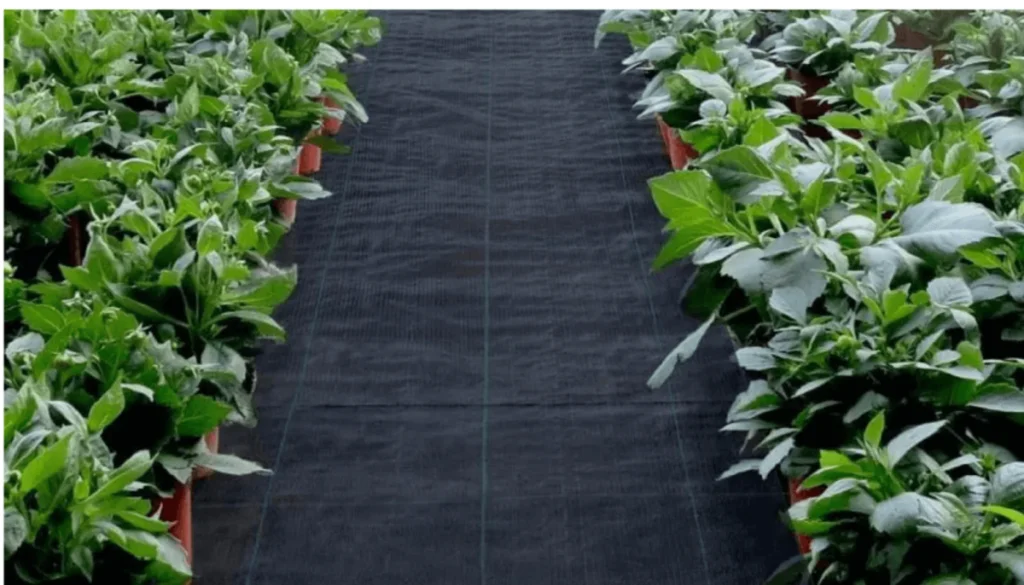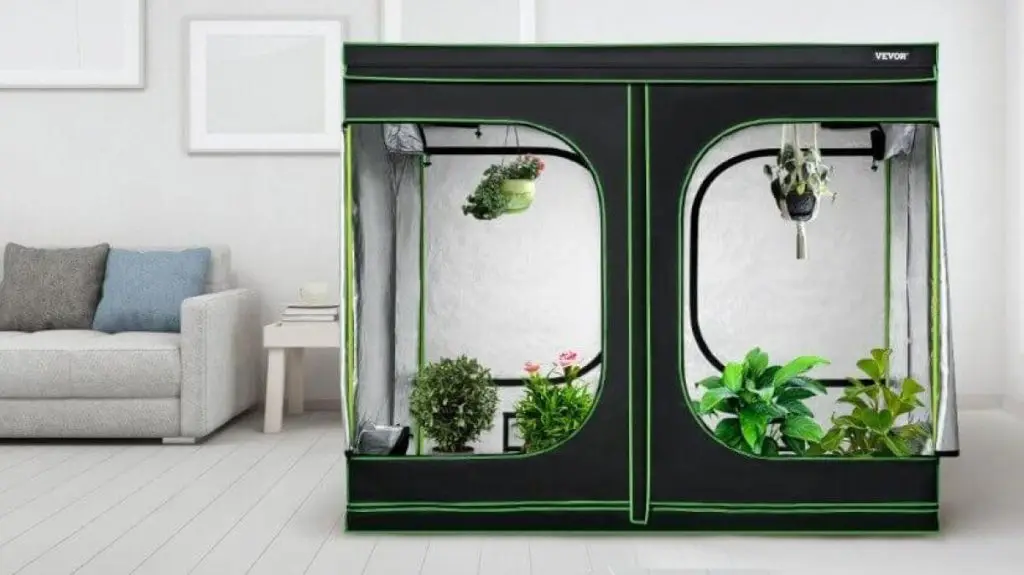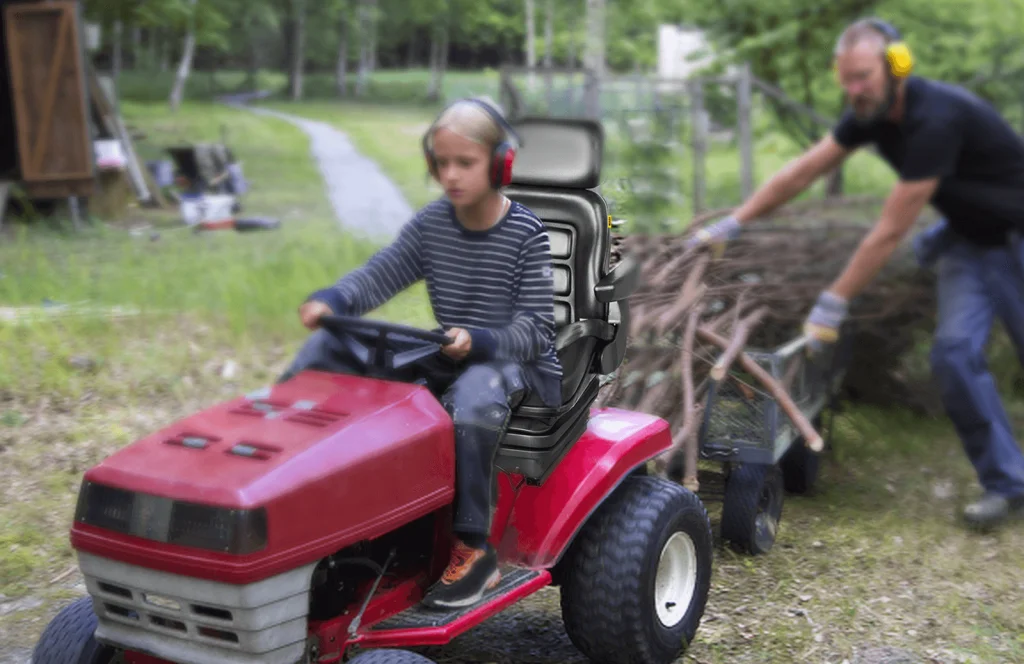Fertilizing your gardens through landscape fabric isn’t just environmentally friendly, it’s also cost-effective and easy to install, even for a first-time user. Proper plant spacing is also practically seamless with pre-burned holes while giving a clean and tidy-looking garden.
However, while landscape fabric has several perks you probably wouldn’t miss, few homeowners know how to use it properly. This article has all you need to understand about landscape fabric, including:
- When and how to use landscape fabric
- Essential maintenance tips
- Special techniques on how to fertilize through landscape fabric;
- Custom fertilization tips for different plant needs.
Meanwhile, while there are many fabric options, we recommend VEVOR’s Weed Barrier Landscape Fabric as one of the best solutions for your garden. The tool doesn’t just replicate the general advantages of landscape fabrics; it is highly versatile for various fabrics and highly permeable, so all watering gets through and doesn’t puddle above the material.
Table of contents
Understanding Landscape Fabric
Landscape fabric is a material gardeners use primarily to keep weeds from growing among flower beds and borders. Manufacturers could make them from synthetic, organic, or recycled fabrics. Besides keeping weeds away, landscape fabrics help plants retain water by reducing moisture evaporation from the soil underneath. It becomes invaluable during summer if your plants thrive in moist soil and could dry out under intense sunlight. That way, you can spend less on heavy or frequent watering.
However, you want to use a high-quality landscape fabric, like those from VEVOR, to maximize the benefits of the product in your garden. There are several advantages of using professional-grade landscape fabrics, such as the one from VEVOR. The benefits are discussed below.
- It stabilizes soil temperature: It acts as an insulation layer on the topsoil to keep the soil warm in winter and cool in summer. That way, your plants’ root systems can survive extreme weather conditions without frosting in the winter or getting burnt during summer.
- Green solution: High-quality landscape fabrics are environmentally friendly. Using these top-quality fabrics also helps herbicide usage while protecting the environment.
- Erosion control: Landscape fabrics work well on steep slopes threatened by erosion.
- Flexibility: Landscape fabrics, such as the VEVOR’s landscape fabric series, come in various thicknesses and materials, making them customizable for different projects.
- Affordability: Buying a landscape fabric might not be the cheapest on your to-do list, but when you consider the cost of keeping weeds away for several years against purchasing expensive weed killers, a landscape fabric can make a shrewd choice.
Preparing to Fertilize Through Landscape Fabric
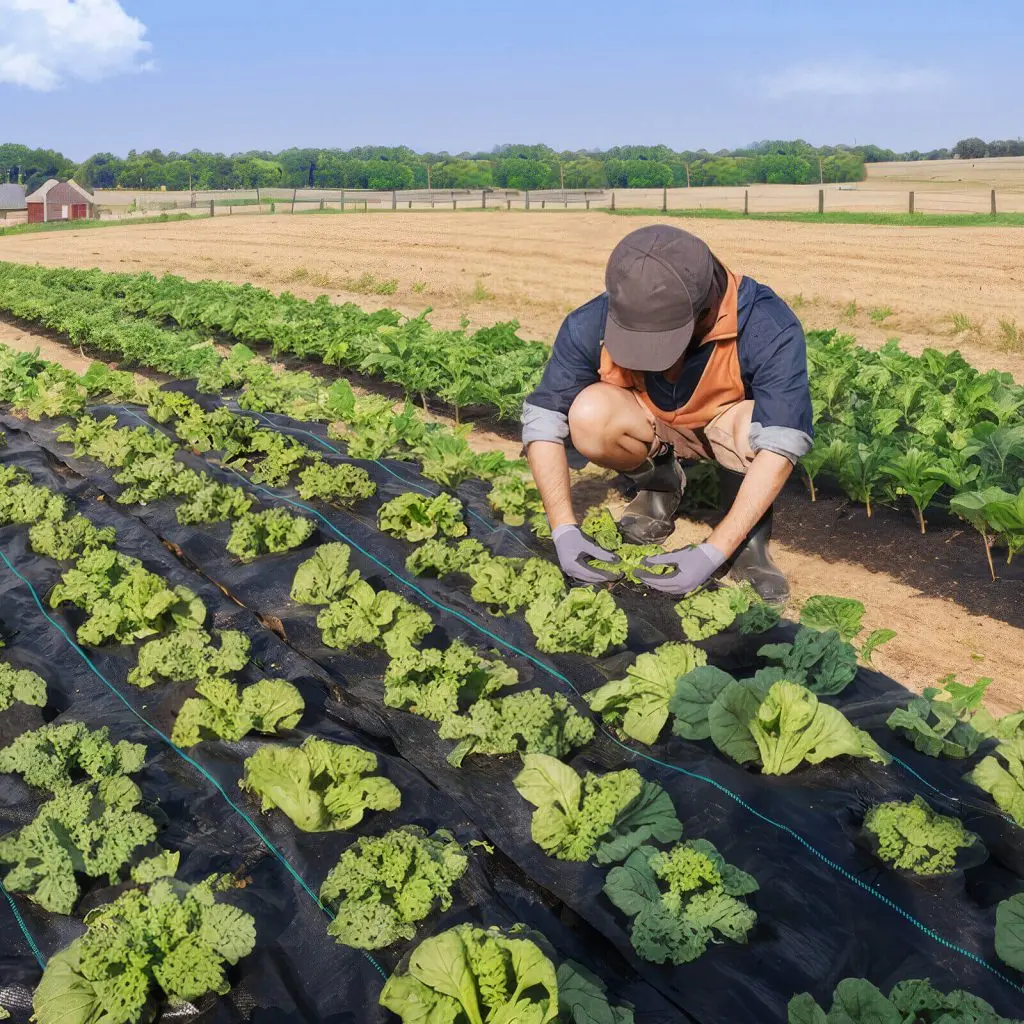
There are two types of fertilizers: granular (dried) and liquid (water-based) fertilizers. While granular fertilizers are cheaper, easier to store, and deliver slowly over the landscape, liquid fertilizers are easier to apply and provide quick results over much ground upon application.
Unlike liquid fertilizers, granular fertilizers don’t settle over time and aren’t affected by cold weather. Liquid fertilizers are beneficial year-round when applied correctly, while granular fertilizers are helpful during colder weather. Granules provide a slow release of nutrients over a long period, making them ideal for these seasons when growth is slower or more gradual. While liquid fertilizers are also great during winter, avoid applying too much as your grass enters dormancy.
Slow-release granular fertilizers are ideal for perennials, while annuals would do great with liquid fertilizers. That said, both granular and liquid fertilizers are generally effective when applied correctly. However, if you have a new or dying lawn, a liquid fertilizer is handy for quick-release and delivery of nutrients and even application.
Why You Need to Place the Smooth Side Up When Installing the Landscape Fabric
Many landscape fabrics come in two distinct sides: a fuzzy side to better stick to the ground and a smooth side that should face upwards. Turning the fuzzy side against the soil helps it better adhere to the soil so it doesn’t shift or move around often while you’re cultivating plants. While your landscape fabric will still function if you turn the smooth side down, doing so is less effective and could make the liquid puddle on the surface instead of soaking in.
Importance of Soil Amendments
Once you’ve laid the fabric, no compost or organic matter will get into your soil unless you remove the fabric. Meanwhile, organic matter and compost contribute significantly to your soil’s nutrients and hospitality for plants’ roots. Here’s why you want to add as much compost and composted manure as possible regardless of the plant types and the soil quality you’re working with. Wondering if you’ve laid the right quantity of organic manure in your soil before laying the fabric? Use more!
Fertilizing Techniques for Landscape Fabric
A hose attachment is excellent for applying water-soluble fertilizer. That’s because your liquid fertilizer soaks through the landscape fabric. Remember to clear all debris like bark or other mulch around the plants before fertilizer application. Follow the manufacturer’s instructions when mixing or applying the fertilizer. A well-installed landscape fabric will allow liquid to soak through the fabric and provide water and nutrients to plants in the area.
If you have a small garden or lawn, a handheld spreader is excellent and cost-effective for even application while carrying around your fertilizer seamlessly. One way to ensure even spreading is to spread half the required amount in the north-south direction and the remaining in the east-west direction.
Growing some shrubs and trees beneath your landscape fabric? Make an X-shaped cut in the fabric above the shrub during installation, working the sheet over the shrub and through the cut slit. Ensure the slit is large enough for the size of the trees or shrubs when doing this to avoid unwanted pop-ups or perforations.
Special Tips for Ground Cover Fertilization
Are you applying ground cover fertilizer to nourish and protect your low-lying plants? Spray the liquid fertilizer over the entire area, following the manufacturer’s guide. An excellent fabric will allow the liquid to soak through to provide water and nutrients to plants in the arena. Meanwhile, it’s best to fertilize before the growing season begins so the nutrients are available for the year’s significant growth phase.
Techniques for Fertilizing through Landscape Fabric
Are you considering applying liquid fertilizers to your landscape fabric? Applying liquid fertilizers is relatively straightforward with liquid spreaders or sprayers as you stick with the user’s guide. While at it, move at your regular walking speed, moving back and forth between the edges during fertilizer application. Also, turn off the spreader when you arrive at a stop or make a turn to avoid uneven layering.
Meanwhile, don’t forget to create a comfortably large slit for the size of your trees or shrubs to protect both the landscape fabric, soil and your plants throughout fertilizer application or other cultivation practices.
Customizing Fertilization for Different Plant Needs
Different plants have varying needs for a landscape fabric. For instance, gardens or flower beds require high permeability, while shrubs and trees would do great with a woven landscape fabric. But you don’t have to worry about getting the perfect fabric for your garden, tree, or shrub. VEVOR fabrics accommodate all fabric types so you don’t need to patronize or shop various brands to get the perfect fabric for your garden, lawn, or yard.
Thankfully, burning holes in landscape fabric is relatively straightforward. Use a torch to ‘cut’ fabric to length, cauterizing the material’s edges to prevent fraying. You can burn holes into your landscape fabric before planting or before installing the fabric in the yard. Torches, propane canisters with a trigger switch, and mulch burners with mounting bases are excellent burning tools to help you create the perfect hole in your landscape fabrics.
Consider using a template pattern for burning holes in the fabric if you desire perfectly-spaced planting holes. You can readily make wooden templates with a drill bit over a DIY task and measure spacing on the template to create the required holes. Keep the holes at a maximum of 3 inches in diameter to keep as many weeds as possible away while making planting easier.
Per the perfect spacing for your plants, consider a tight 15 cm spacing for growing single-stemmed crops like ‘Bombay’ celosia, lisianthus, and flowering kale. A 23 cm spacing is ideal for growing flowering plants like honeywort, bupleurum, dianthus, frosted explosion grass, basil, and ageratum. But if your plants are rather bulky and look like lavatera, bells of Ireland, amaranth, or scented geranium, a 30 cm spacing would make them thrive maximally.
Following the trend, it’s easy to see why larger flowers like eucalyptus and sunflowers require 46 cm spacing to thrive. Similarly, sweet peas, love-in-a-puff, hyacinth beans, and comparable plants would require 20 cm between plants and 30 cm between rolls, while larger plants like Dahlias would require more spacing to thrive.
Maintenance and Care Post-Fertilization
After applying fertilizer to the lawn, water thoroughly after fertilizing to wash the nutrients into the soil where lawn roots can use them without them washing away due to heavy rain. Watering also washes away fertilizer from shoots to avoid burning.
Lastly, clean the empty spreader with a hose at the end of your fertilizer application. Skipping this precautionary step can slowly corrode the spreader. Wash out the spreader and allow it to dry before storing.
Conclusion
Landscape fabrics are one of the cheapest ways to preserve the soil, plants, and environment. Besides being affordable and environmentally friendly, they’re versatile with various thicknesses or fabrics to give you a wide range of quality options for grooming your yard.
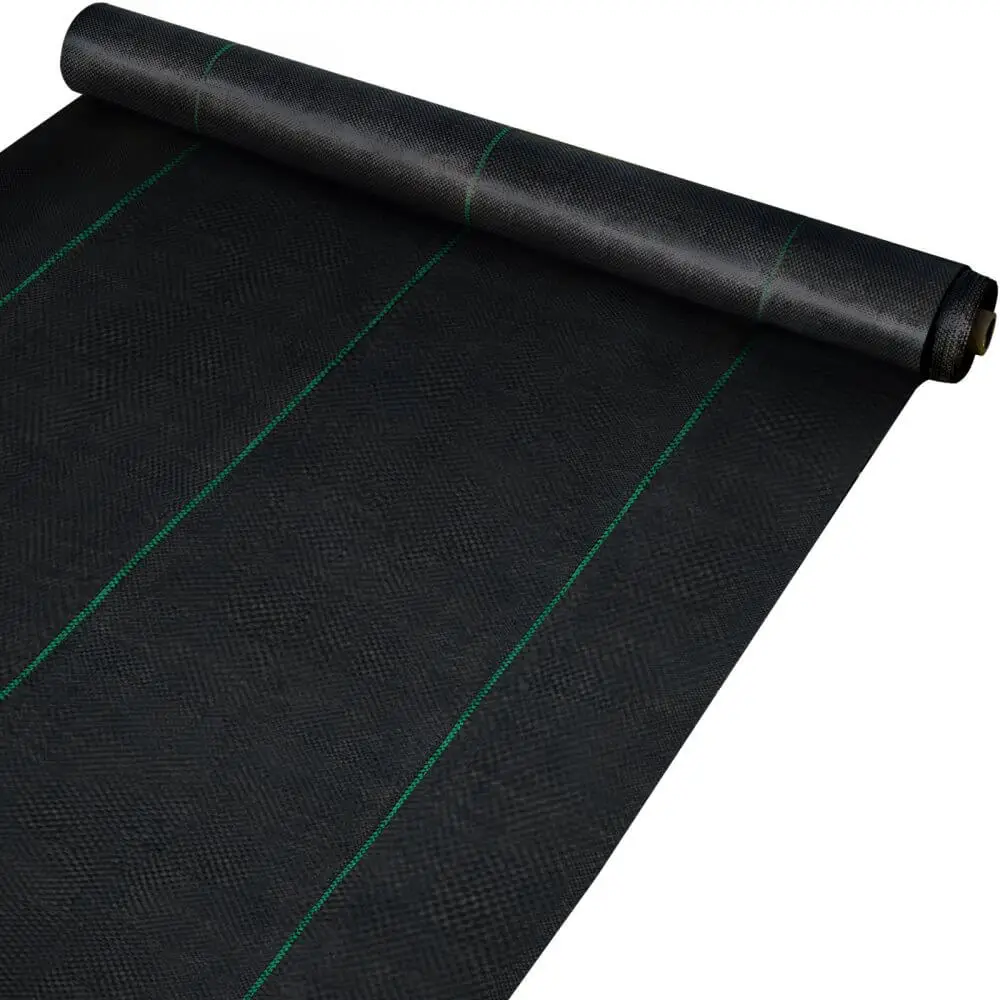
Speaking on quality, VEVOR’s Heavy Duty Weed Control Fabric offers magnificent usability, versatility, and durability, regardless of your unique gardening needs. However, this product is only one of the many amazing landscape fabrics from VEVOR that gardeners and homeowners seeking the best landscape fabrics for ground covers, trees, shrubs, or other plants can opt for.
We’re sure you won’t have to worry about ground cover fertilizer application or fertilizing your lawn through the landscape fabric with the perfect item from VEVOR. What’s more? Visit VEVOR today and purchase the best landscape fabric for your home or office.
For any further inquiries you may have on purchasing your next landscape fabric, reach out to VEVOR’s help desk today, and get clarity from an agent in their dedicated customer support team.

